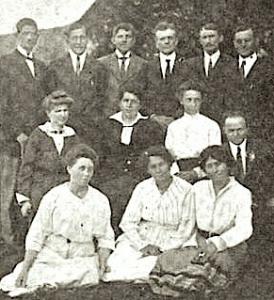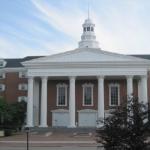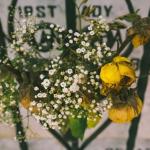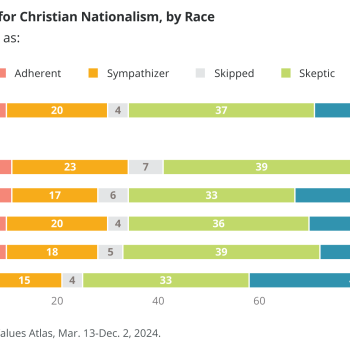Are African American Christians evangelical? They certainly fit David Bebbington’s four-fold definition—and most other formulations devised by American religious historians. And yet most people don’t picture a black person when the term is used.
This is nothing new. As Tim Gloege demonstrates in Guaranteed Pure, conservative black evangelicals remained on the sidelines as the fundamentalist-modernist controversy raged at the turn of the twentieth century. He writes, “At no point did white evangelicals consider reaching out to the nation’s black churches.” The color line, Gloege concludes, “always trumped theology.”

This despite fundamentalists’ talk of doctrinal purity as the foundation for Christian fellowship. Indeed, the National Baptist Convention, a black denomination founded in 1895, made its commitment to fundamentalist doctrine clear. “All colored Baptists are fundamentalists,” said one of its denominational editorials. It called modernism a “cancer on the body ecclesiastic.” It told its readers to not study “Evolution” or “liberal Religion.” Instead, they should “be devoted to prayerful, strongly mental meditation of the Word of God as held and taught by Baptists throughout the ages.”
But African American fundamentalists distinguished themselves from white fundamentalists by attaching social justice to their agenda. They denounced lynching. They pushed for black civil and social rights. Some worried that white fundamentalists “could set decades of hard work and rights activism backward.”
For black evangelicals, then, racism “represented a hallmark of the white fundamentalist faith.” They displayed a real sense of alienation. Roscoe Simmons in the Chicago Defender wrote, “American white people are still fighting over religion. Maybe the Modernists and Fundamentalists arguing about creeds will stumble up on true religion.” Both sides clearly cared about faith. Simmons conceded that there is “no doubt as to our white people having religion.” On the other hand, “Getting them to use it every day is something else.” Simmons concluded, “Don’t follow our smart white people off in this religious war. . . . Our white people are tangled up. Pray for them; don’t follow them.”
Others made similar pleas. From the Pittsburgh Courier: “We must look to another than the Caucasian Church for a true and reliable exemplification of the life of our common brother.” In front of white Emory University students, J. Raymond Henderson, a black minister from Atlanta, said, “This is the Bible belt where people profess to believe in the Bible from cover to cover, and where a fundamentalist conservative religion is matched by an equal degree of bigotry, and injustice, which makes peons out of the poor of your group and of mine, and even eventuates into the most awful evil of society, namely lynching. Here in the south we have a religion that is so good that a colored youth would contaminate it. . . . The curse of the south is its religion, it is too fundamentalistic, theoretical, doctrinarian, and priestly.”
Black alienation from white religion didn’t matter. Nor did their critiques. That’s because Moody’s branding of white fundamentalist religion worked. It guaranteed pure gender, racial, and theological categories. This appealed to the Institute’s white constituents.
Times have changed. Moody exists in a new and segmented marketplace serviced by innumerable niche players, and it has struggled to keep up with many emerging brands. Gloege writes, “Defending and developing a single trademark made it too slow and old-fashioned for a modern, agile market with virtual communities that dissipate as quickly as they form.” As a result, Moody is eliminating campuses and cutting faculty. Now that it needs students of color to maintain enrollment, its history of exclusion is coming back to haunt them.












